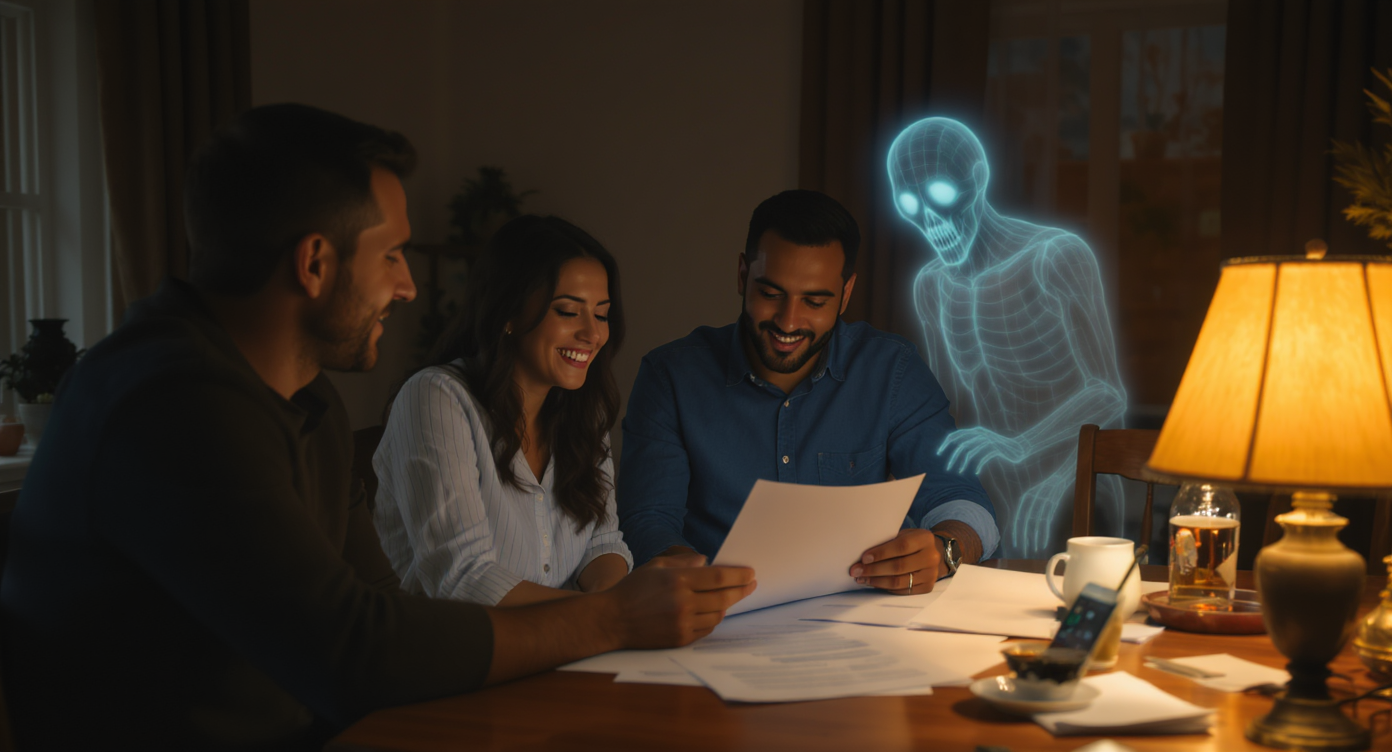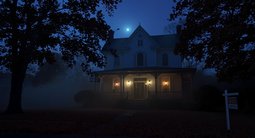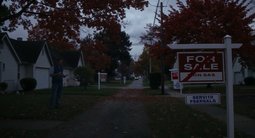TL;DR
New surveys show most Americans would consider buying a haunted house — especially with a discount. Buyers are weighing folklore against affordability and using disclosure, pricing, and presentation to make stigmatized properties work.
Haunted house real estate is having a moment

Turns out, most buyers aren’t afraid of spirits — just overpricing. A good deal can quiet almost any ghost.
America is more open to haunted house real estate than you might think — and yes, the price tag matters most. Housing anxiety is real, but so is curiosity. Recent national polls from mortgage and consumer-finance researchers indicate that nearly two-thirds of Americans would consider buying a haunted house, with roughly four in ten saying “yes” outright and another quarter saying “maybe.” One in three people say they’ve lived in a home they believed was haunted. For a tight inventory market, that’s a meaningful shift in buyer psychology. Here’s the thing: buyers aren’t just tolerating ghosts; they’re bargaining with them. Many respondents said they’d want a substantial discount — often 20% to 59% off — to accept a stigmatized property. Meanwhile, a notable share say they’d befriend the “resident,” learn the home’s story, or coexist peacefully. Agents often note: stigma fades when a listing is priced cleanly and marketed with transparency. Photo caption: Porch lanterns flicker on a Victorian facade. Alt text: Historic home at dusk framed by moody lighting.
National Data Insight: Haunted homes move buyers when the price is right
Homes said to be haunted can sell, but they rarely fetch full freight. Surveys this fall show 65% of buyers would consider a haunted home; close to 40% want at least 40% off, while another 29% say a 20%–39% discount does the trick. Market analysts suggest stigma works like any condition issue: quantify it, price it, disclose it. In parallel polling of 1,000–2,000 consumers, about 35% report living in a home they believed was haunted, and roughly 8% even say they’d pay more for the lore. That’s rare, but it underscores a niche: fear-based valuation cuts both ways when a story goes viral. Data visualization note: Plot discount expectations by buyer share (under 20%, 20%–39%, 40%–59%) to illustrate the pricing bar most buyers expect haunted homes to clear.
Anecdote
A Chicago-area seller leaned into the lore — weekend ghost tours, then a straight-laced listing with a 7% price trim and a full inspection packet. The result: 12 offers, three over ask, and the winning buyer wrote that the home’s story “felt like part of the charm.”
Regional and Segment Shifts: Where stigma softens fastest
Affordability pressure is changing the map for stigmatized property. Agents in high-cost coastal metros and popular Sun Belt suburbs report that buyers stretch their criteria when inventory is thin and rates are high. Where demand is deep, stigma loses its bite. Florida and Texas agents say climate and insurance worries already force hard trade-offs; a rumored haunting may feel secondary if schools, commute, and price align. In New England’s older housing stock, folklore is baked into the neighborhood fabric; buyers there often ask for disclosures and a fair haircut rather than walking away. One Boston-area agent put it this way: “If the house is right, the story becomes part of the pitch.” Case in point: a colonial-era farmhouse in northern Rhode Island lingered until the seller priced 12% under nearby comps and published a clear chronology of prior owners. Weekend showings tripled and it received two offers in five days.
Behavior and Market Psychology: What spooks buyers — and what doesn’t
Buyers fear uncertainty more than apparitions. Clear disclosures, realistic pricing, and strong property photos make haunted house real estate feel manageable. In surveys, the most common “evidence” of hauntings is mundane: a strong presence, odd noises, unexplained footsteps. Many respondents described their ghosts as friendly or mischievous rather than angry. That tracks with what listing agents observe: what kills deals isn’t a whispering hallway — it’s hidden issues, defensive sellers, or a vibe that feels isolated and creepy. I’ve seen this happen: a New Jersey colonial with an infamous letter-writing saga struggled while priced like a pristine comp. When the seller reframed the listing as a historically notable home with a 9% concession and a pre-inspection report, traffic returned. A quotable rule for stigmatized property: own the story or the story owns you.
Secondary Sub-Trends: Disclosures, discounts, and when deals collapse
Most friction emerges at disclosure and inspection. Consumer studies show 70%+ of buyers expect upfront clarity; in parallel, roughly three-quarters believe sellers should disclose suspected hauntings. Yet more than a third of potential sellers admit they wouldn’t disclose — afraid they’ll scare off offers. Price is the release valve. About four in ten buyers want a 40%–59% discount to accept a haunted house; another three in ten say 20%–39% is enough. Deals tend to die when sellers deny a widely known stigma, or when a “creepy” setting, a violent on-site death, or contradictory neighborhood rumors surface late. Mini case study: a Phoenix buyer negotiated 15% off after online chatter labeled a 1990s stucco a “ghost house.” The buyer’s condition? A thorough inspection, environmental testing, and a credits-for-cosmetics plan to brighten the interior. The home appraised within range and closed in 28 days. Caption: Bright paint and layered lighting can neutralize ominous interiors. Alt text: Revamped living room with warm lamps and pale walls.
Visualization Scenario
Side-by-side virtual staging concepts: moody vs. bright schemes for the same living room to test which softens stigma and lifts click-through rates.
FAQs: Buying and selling haunted houses
How much should I discount a haunted house listing for home selling and pricing a stigmatized property? Most buyers expect 20%–59% off for a haunted house; aim to quantify local stigma against comps and days-on-market, then price transparently. What are haunted house disclosure laws and how do I sell a stigmatized property legally? Disclosure rules vary by state; many treat psychological stigmas differently than material defects. Ask your agent or attorney to align disclosures with local law. Is buying a haunted house a good real estate investing strategy and how to value a stigmatized property? It can work if the discount outpaces the stigma. Investors look for 10%–30% below comps, then de-stigmatize with renovations, great photos, and clear history. How do I market a haunted house listing online with real estate marketing and virtual staging for real estate agents? Lead with transparency, great property photos, and bright, neutral staging. Use virtual staging to test lighter looks and anchor the story to price and upgrades. What scares home buyers more: ghosts or repairs when home buying a haunted house? Repairs. Buyers tolerate folklore but balk at hidden defects; fix material issues first, then address stigma with pricing and presentation.
Market Outlook: Spooky sells when presentation and pricing align
Not every market leans spooky. Ultra-tight tech hubs and select inner-ring suburbs still see buyers pay near-list, stigma or not, because scarcity trumps stories. But nationally, the trend is clear: stigma is negotiable when the math works. For sellers and agents, this is practical, not paranormal. Haunted house real estate responds to the same levers as any listing: transparency, pricing, and presentation. Tools and tactics matter. For Sellers:
- Get a pre-listing inspection and gather records; buyers reward clean files and candid disclosures.
- Right-price against comps; consider a 5%–15% concession to preempt stigma drag.
- Brighten the mood: swap heavy drapes, add layered lighting, repaint in warm neutrals, and refresh curb appeal.
- Publish a measured property history; don’t sensationalize, but don’t hide widely known lore.
- Underwrite the house, not the rumor: inspect, test, and budget for cosmetic changes that shift the “feel.”
- Tie your discount ask to comps and days-on-market; document neighborhood chatter for leverage.
- Clarify disclosure rules with your agent or attorney; requirements vary widely by state.
.svg)

.svg)









.png)